VCD DA seminar this Thursday 18 October,
15:15-17:00, in room O112 (Väre).
Responsible teacher: Prof. Masood Masoodian
Our new DA candidate, Dohee Lee, will be presenting her initial research plans.
VCD DA seminar this Thursday 18 October,
15:15-17:00, in room O112 (Väre).
Responsible teacher: Prof. Masood Masoodian
Our new DA candidate, Dohee Lee, will be presenting her initial research plans.
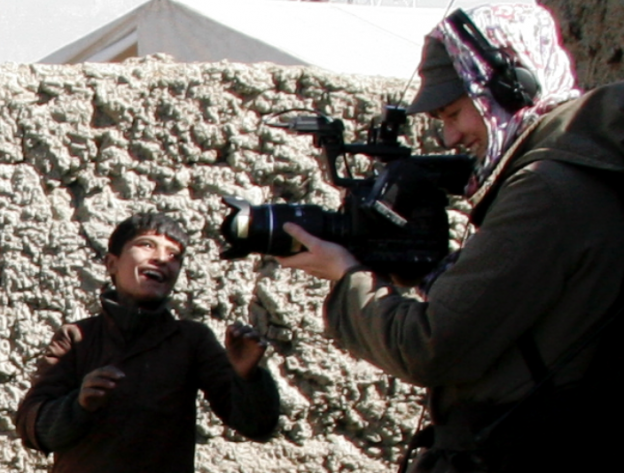
Welcome to the Media Lab Doctoral Seminar
TIME: Thursday October 25, 2018, from 16:30–19:30
LOCATION: Aalto University, Learning Centre, room JUHO.
DOM-L0007 New Media Doctoral Seminar
Responsible teacher: Prof. Lily Díaz-Kommonen
PRESENTATIONS BY:
Guest speaker: Tone Andersen
Mamdooh Afdile
Daniel Landau
See abstracts below.
The seminar is open for all. Welcome!
by Tone Andersen
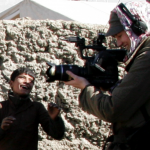
My name is Tone Andersen and I’m a Norwegian cinematographer and filmmaker. Many of the films and programs I have worked on has been about strangers from a different country, a different culture, whom often speak a language I didn’t master. In countries like Palestine, Pakistan, Thailand, Kongo, Afghanistan and Somaliland I have been continuously facing the challenge of finding the way to tell their personal stories for a Western audience. Though the familiar reality to many documentarists worldwide, this is a question often not problematized. What are the advantages and disadvantages of coming in as a foreign filmmaker? Can a foreigner ever tell a local story in an authentic way? Through examples of projects I’ve worked, I will give a short talk presenting my personal reflections and the challenges in dramatizing the lives of others with a focus on the foreign setting.
Tone Andersen: After graduating from SIADUK, she started out as a camerawoman in the Middle-East in 2002. Since then she has worked as a cinematographer, director, producer and editor in various formats world-wide. She has shot award-winning stories on social and human rights concerns from Asia, Africa, the US, the Middle-East and Europe. Her debut documentary as a director; When the Boys Return premiered in IDFA in 2012 and won several prizes at festivals around the world. In 2016 Andersen and her partner Mamdooh Afdile founded their own production company, Klar Film. There Andersen currently works as a producer and screenwriter, developing ideas for TV-series and film.
by Mamdooh Afdile
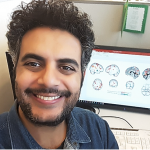
The unspoken truth about our prejudice and negative attitude toward others left psychologists and researchers stand puzzled on how to investigate a behavior that many are ashamed to admit. We tend to “keep our thoughts to ourselves” when we suspect that the surrounding might be judgmental or dismissing. This behavior have caused a challenge to investigating negative emotions toward others. In this short talk I will present my work in trying to address this limitation by combining movie viewing with brain imaging methodology. The brain doesn’t lie when it comes to what it likes and what not.
Mamdooh Afdile graduated from the Sam Spiegel Film & Television School in Jerusalem in 2005. He has extensive experience in producing, directing, shooting and editing film and TV programs in a wide variety, from NGO advocacy films, reality TV shows, to feature films. Afdile has also worked as a film lecturer and consultant. As well as developing ideas for KlarFilm, he currently a doctoral candidate in media and neuroscience at Aalto University in Finland.
From Narcissus’s pond through reflective surfaces and modern age selfies, the concepts of self, body-image, and self-awareness have been strongly influenced by the human interaction with reflective technologies. As digital media pervasively enters our lives, a new dimension of self-documentation becomes a major force in shaping the conception of the narrative-self. With the current wave of Virtual Reality technology making its early steps as a consumer product, Media artist Daniel Landau, set out to explore the new ways in which VR impacts our concepts of self and self-awareness; and the opportunities and challenges that re-embodiment in VR brings to the way we perceive the ‘self’ in relation to ‘others’. In his lecture, Daniel Landau will map the empirical studies he has designed comprising his Doctoral research.
Daniel Landau is a media artist, researcher, and lecturer. He studied Computer Music and New Media at the Royal Conservatory in The Netherlands. Residing at the intersection of Art, Technology, and Science, Landau’s work explores the Impact of virtual embodiment on the construct of the Self. His work has been presented in major venues, museums, and festivals worldwide including Jerusalem, New-York, London, Amsterdam, Berlin, Shenzhen, Tokyo, Paris, and Mexico City. Daniel is regularly invited to give talks about his art and science projects in institutions and festivals worldwide, among them are CalTech, Stanford University, UCLA, University of Copenhagen, Aalto University. Between 2012 and 2016, Daniel led the Media Studies department at the Midrasha Faculty of the Arts, and since 2014 he lectures at the Interdisciplinary Centre, Herzliya. Daniel was recently invited to UCLA as a visiting lecturer and he is currently a doctoral candidate at the Aalto University Media Lab, Finland.
The Faculty of Communication Sciences (COMS) at the University of Tampere invites applications for a fixed-term doctoral researcher’s position starting from November 1st, 2018, or soon thereafter. The length of the position will be decided separately (max. 3 years).
The position is part of the field of visual cultures / visual studies, and aims to support its work and visibility in Finland. The tasks include research on visual cultures according to the applicants own research plan, a survey of the development and use of visual technologies, as well as the organization of an annual seminar. The researcher may, upon agreement, use this material as part of her/his doctoral research.
A person appointed as a rdoctoral esearcher must hold a Master’s degree or higher, and be able to pursue scientific research independently. The appointed researcher should preferably have an understanding of visual culture studies, media studies, communication, cultural anthropology and/or sociology. The position requires good cooperation skills, willingness to travel, and good written and spoken communication skills in English.
The preliminary salary is based on level 2 (2005,71€) of the job-related salary element for teaching and research personnel in the salary system of the Finnish Universities. The basic salary will be supplemented with a performance increase up to 46,3 % based on the employee’s individual performance. The position carries a six-month trial period.
Please submit your application documents through the University’s online application system by 15:00 Finnish time on 24.10.2018 The application should be sent with a curriculum vitae, copies of the degree diplomas, a ca. 20 page example of the applicants scientific writing skills, and other materials considered relevant such as letters of recommendation. Applicants may be invited for an interview in person in Tampere or online.
For further information about the position, please contact:
Associate professor, Docent of Visual Cultures, Asko Lehmuskallio, asko.lehmuskallio@uta.fi
For more information about the application process, please contact:
HR Specialist Marja Jussila, marja.jussila@uta.fi
https://www.uta.fi/sites/default/files/inline-files/Instructions_for_recruitment_system_0.pdf
This post also in Finnish here: https://uta.rekrytointi.com/paikat/?jgid=1&jid=1218&o=A_RJ
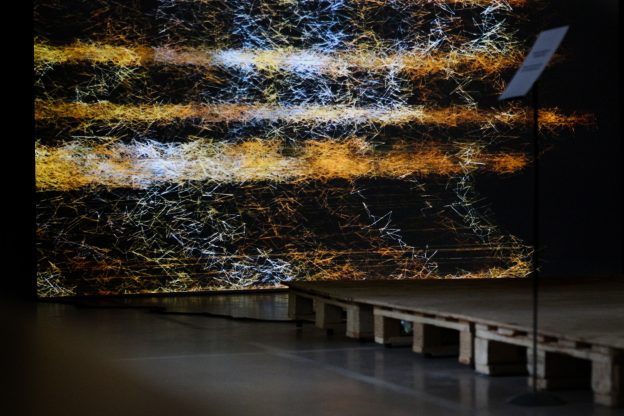
Welcome to the Media Lab Doctoral Seminar
TIME: Thursday September 27, 2018, from 16:30–19:30
LOCATION: Aalto University, Väre, room O112.
DOM-L0007 New Media Doctoral Seminar
Responsible teacher: Prof. Lily Díaz-Kommonen
Presentations by: Neha Sayed and Roberto Pugliese. See abstracts below.
The seminar is open for all. Welcome!
(M.Phil., D.Sc. (Technology), ITA/FI, b. 1980)
https://www.robertopugliese.net
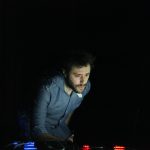 Roberto Pugliese is a media artist and researcher based in Helsinki, working with time-based digital and physical media. His work consists of compositions, installations and performances. Often concerned with memories, recordings and loss, his pieces can incorporate animation, sound, moving objects and the modification of physical media using programmed hardware and software. By collecting, processing and coupling audio and visual material, he works towards a common language among visual and sonic imageries. The installations often use sound and its transformation to establish alternative relations between the visitor and the space.
Roberto Pugliese is a media artist and researcher based in Helsinki, working with time-based digital and physical media. His work consists of compositions, installations and performances. Often concerned with memories, recordings and loss, his pieces can incorporate animation, sound, moving objects and the modification of physical media using programmed hardware and software. By collecting, processing and coupling audio and visual material, he works towards a common language among visual and sonic imageries. The installations often use sound and its transformation to establish alternative relations between the visitor and the space.
“My installations deal with the passage of time by creating objects and spaces that embody memories, in their disappearance, transformation and potential for reinterpretation.
My compositions and performances explore the relationship between sound and images, their perceptual integration in time and space and intertwined choreography as one medium.”
He collaborates with dancers and choreographers for the creation of alternative stages and new forms of media performance (SocEmo, Aalto University, Helsinki), and with scientists and researcher to develop interactive settings targeting special groups (Asperger’s syndrome) to facilitate social interaction and promote creativity (MEDIAT, CNRS, Paris).
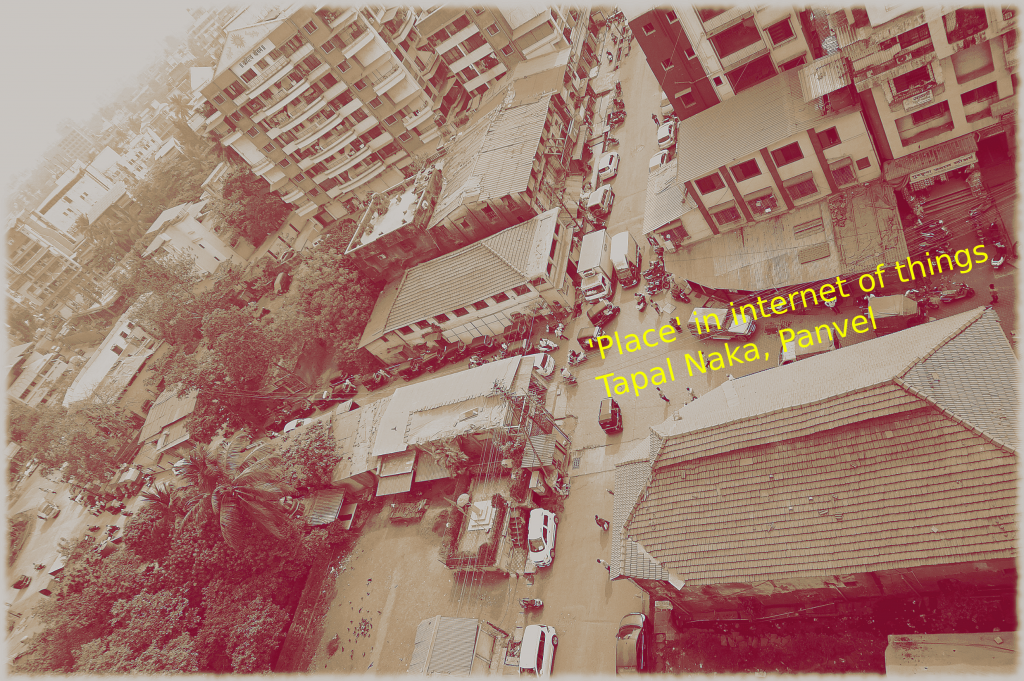
by Neha Sayed
Abstract: ‘Internet of things’ promises a new configuration of space augmented with data sensing and sharing technologies challenging the notion of ‘PLACE’. The advent of these surveillance technologies promises an ‘openness’ affecting the way we live our daily life. The ‘place’ that is bound to change in this process altering the way we perceive it. This research aims at exploring the evolution of this place in ‘Internet of things’. Building on the Posthuman Ontology of Karen Barad, I began the research by trying to investigate the notion of place. The research is autoethnographic and the place that I studied is a market square I have grown up in. For last two years, I have conducted observations with the community and I am now formulating the notion of place as a resultant phenomena of a correspondence between human activity and space. In this ever evolving cultural phenomena the role of cultural interfaces is crucial. I am identifying these interfaces which will transform as they get embedded with sensor driven technologies. This research will attempt to test these technological interventions and assess the resulting place.
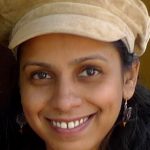 Neha Sayed: Basically an architect from Mumbai I have done a combination of architectural practice and teaching for last eighteen years. I did my masters in experience design from Konstfack, Stockholm, which added another skill of being a researcher. My work in the masters was focused on developing user centered design and studying research methodologies to achieve the expected outcome. Since 2009, apart from teaching and architectural practice I have been conducting research within communities and their relationships to space and in turn place. In 2012-13, I lead a team of researchers to draft street furniture manual for a heritage town of Matheran, which is the only pedestrian tourist destination having a very unique community dynamic. The manual is being adopted for the policies and design. The project inspired me to think of place specific design interventions with active participation of the community. My practice as a designer has remained strong all this while, which is mostly around interior architecture, where the smart technologies are treated as a material. My concern about the role of sensor driven environments grew and it led me to explore the changing nature of place in the case of Internet of Things.
Neha Sayed: Basically an architect from Mumbai I have done a combination of architectural practice and teaching for last eighteen years. I did my masters in experience design from Konstfack, Stockholm, which added another skill of being a researcher. My work in the masters was focused on developing user centered design and studying research methodologies to achieve the expected outcome. Since 2009, apart from teaching and architectural practice I have been conducting research within communities and their relationships to space and in turn place. In 2012-13, I lead a team of researchers to draft street furniture manual for a heritage town of Matheran, which is the only pedestrian tourist destination having a very unique community dynamic. The manual is being adopted for the policies and design. The project inspired me to think of place specific design interventions with active participation of the community. My practice as a designer has remained strong all this while, which is mostly around interior architecture, where the smart technologies are treated as a material. My concern about the role of sensor driven environments grew and it led me to explore the changing nature of place in the case of Internet of Things.
 It is with deep regret and sadness that we must inform you of the passing of our long-time colleague and friend, Professor Merja Salo. She passed away on 16th of August 2018. At Aalto University School of Arts, Design & Architecture, Merja was Professor of Photography and Visual Communication, responsible for Photography research and related doctoral studies. Merja had been seriously ill for some time, fighting with cancer, and was intending to retire at the end of August. One week before her passing away Merja was still planning to give a lecture in her retirement seminar in September, but then her condition deteriorated suddenly. The Department of Media is deeply saddened by her sudden departure and she will be sorely missed by all of us who have had the pleasure to work with her, and study under her supervision during the last 27 years.
It is with deep regret and sadness that we must inform you of the passing of our long-time colleague and friend, Professor Merja Salo. She passed away on 16th of August 2018. At Aalto University School of Arts, Design & Architecture, Merja was Professor of Photography and Visual Communication, responsible for Photography research and related doctoral studies. Merja had been seriously ill for some time, fighting with cancer, and was intending to retire at the end of August. One week before her passing away Merja was still planning to give a lecture in her retirement seminar in September, but then her condition deteriorated suddenly. The Department of Media is deeply saddened by her sudden departure and she will be sorely missed by all of us who have had the pleasure to work with her, and study under her supervision during the last 27 years.
Merja’s funeral and remembrance event will be on Saturday 8th of September at 10.00 in Hietaniemi. The funeral is open to all, and an invitation was published in the deaths announcements section in Helsingin Sanomat newspaper on Sunday 26th of August.
It was Merja’s wish that, instead of flowers, people would consider making donations to the Finnish Natural Heritage Foundation. A collection in Merja’s name has been created by them. More information on the fund: http://www.luonnonperintosaatio.fi/fi/merja-salon-muistorahasto
Helsingin Sanomat article on Merja Salo (in Finnish): https://www.hs.fi/kulttuuri/art-2000005793983.html
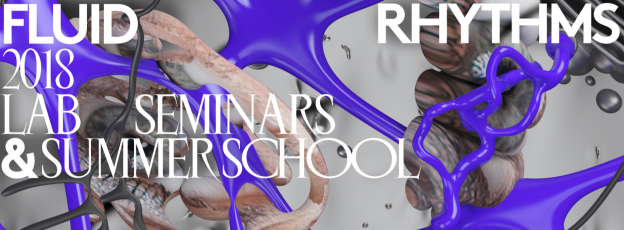
Amsterdam, Netherlands
Application deadline: July 1, 2018
Open Set is pleased to announce the Call for Applications for our new seven-month programme Fluid Rhythms: Urban Networks and Living Patterns. It’s a fresh round of Open Set, dedicated to exploring the potential of rhythm in the context of the Bijlmer, — one of the most vibrant neighborhoods in Amsterdam, once envisioned as an urban utopia and (in)famous for being called the “city of the future”. We are looking forward to a new collaboration with the scientific consortium Designing Rhythm for Social Resilience (IS Amsterdam, University of Amsterdam, Delft University of Technology, Amsterdam Institute for Advanced Metropolitan Solutions). Together we investigate rhythm-led practices as common ground for research and artistic practice.
The programme o ers three different modules to join: a Summer School (15 – 25 Aug 2018), a practice-based LAB trajectory (Oct 2018–Feb 2019), with the parallel track Seminar ‘Rhythmanalysis in Context’. The applications are open for individual modules, or for the combination for all three.
“The crowd is a body, the body is a crowd” — Henri Lefebvre
Life in the city both repeats itself, and is constantly changing. Situated in the Bijlmer, one of Amsterdam’s most vibrant neighborhoods, Open Set launches a new programme, dedicated to exploring the potential of rhythm in the city. The movement of bodies in space; financial transactions; the circulation of sounds, cells, and smells; changing social constructs that divide and connect people; the flow of microscopic substances—such looping patterns generate dynamic complex structures, or ‘rhythms’, that shift over time. In the words of Caroline Nevejan: “where there is rhythm, there is life”. Understanding and working with such dynamic complexities requires careful attunement to the interactions between social, imagined, and physical realms.
We are looking for artists, designers and scholars to join this international and interdisciplinary programme that investigates the potential of rhythm-led practices as common ground for research and artistic work. This means both providing tools to perceive rhythms, as well as tools to tap into their generative potential. Rhythms occur on multiple levels at the same time, in the macro-level structures of the city, within the cells of bodies, and in the interconnections between mind, emotion, brain and heartbeats. By investigating the intertwined patterns of change, a world of subtle complexity starts to reveal itself to us in how humans, machines, animals and microbes interact and coexist.
Artistic interventions can take on any form, whether they are sound, food or image-based formats, performances or digital applications—offering the opportunity to discover new, invisible or forgotten rhythms, to find the points of friction and blind spots and to transform and harness the power for social and ecological change. Eventually, working with rhythms is a way of synchronizing our efforts in acting and living together in a network society.
Line-up of experts
Nadia Al Issa / Christidi—artist & writer Heather Barnett—artist, researcher & educator
Cascoland—network of designers & artists Dash N’ Dem — design action group
Anton Kats — artist
Uta Eisenreich —artist
Satinder P. Gill—researcher
Pei-Ying Lin—designer & artist
Caroline Nevejan—researcher
Thought Collider—design & research duo Noam Toran—artist
Angelo Vermeulen—artist & researcher
more to be announced soon
— Summer School: Aug 15–25, 2018
Application deadline: July 1
Intensive programme of workshops and lectures.
— Open Set LAB: Practicing Rhythm: Oct 19, 2018–Feb 23, 2019
Application deadline: Aug 20
Five-month programme with practice-based sessions held every two weeks in the Bijlmer, aiming at developing individual projects. The parallel trajectories will end in sync, with a shared public presentation and conference.
— Seminar: Rhythmanalysis in Context: Aug 13, 2018–Feb 9, 2019
Application deadline: July 1
Series of presentations, discussions and theoretical texts readings from different disciplines, aiming at exploring the key concepts and multidisciplinary practices related to rhythmanalysis.
See more: https://mailchi.mp/db560ab26b97/fluid-rhythms-new-programme-open-set?e=58ed74cb5d
public program at the
16th International Architecture Exhibition – La Biennale di Venezia
May – November 2018
Swamp Radio (on transmitting), May 23-27
Futurity Island (on symbio-poetics), June 26-30
Commonism (on cohabiting), September 24-29
Throughout the 2018 Venice Biennale of Architecture, the Swamp School will function as a changing, flexible, open-ended structure that supports experiments in design, pedagogy and artistic intelligence. Invited designers and scholars will conduct performative lectures and lead workshops for visitors to the Biennale, all of whom are invited to participate. In exploring the imaginary of a swamp—a living organism in which borders defined by social, political and cultural factors are porous and permeable—we will investigate an open artistic/architectural form and effective workshop and publication methodologies. The Swamp School will act as a pilot for future learning environments, informed by and informing the architecture and installations of its own space. Research questions will focus on creating public interfaces and manuals that support adaptation and learning to meet the demands of a changing environment.
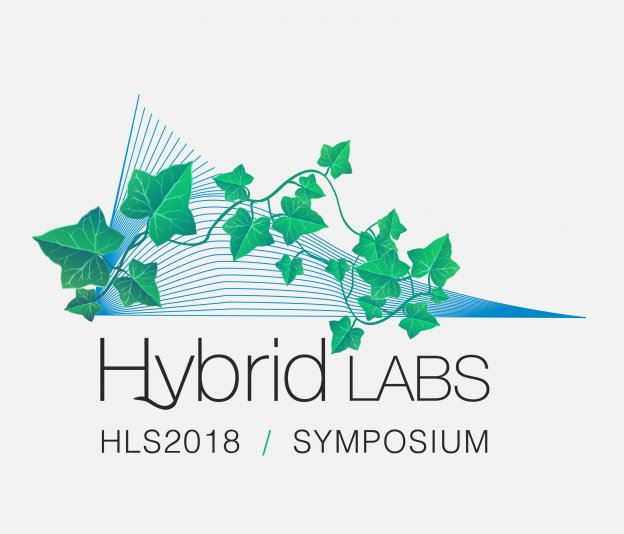
May 30 – June 1, 2018,
Aalto University, Otaniemi Campus, Espoo City
Venues: Otakaari 1X (30–31 May), Otakaari 7 (1 June)
Rooms in Otakaari 1X: A1 (1st floor) and A2 (2nd floor)
Rooms in Otakaari 7: Studio Kipsari and Meeting Room 283 (1st floor)
Hybrid Labs is the third edition of Renewable Futures conference that aims to challenge the future of knowledge creation through art and science. The HYBRID LABS will take place from May 30 to June 1, 2018 at Aalto University in Espoo, Finland, in the context of Aalto Festival. Celebrating 50 years of Leonardo journal and community, the HYBRID LABS conference will look back into the history of art and science collaboration, with an intent to reconsider and envision the future of hybrid laboratories – where scientific research and artistic practice meet and interact.
Our three-day media event medley includes:
May 30, 2018 – Exhibition Opening
Opening Programme features Oslofjord Ecologies Extended exhibition opening. The exhibition is based on results of artistic research processes following common workshops, field trips and earlier exhibitions and performances linked to the Creative Europe project Renewable Futures and the Nordic collaboration Hybrid Labs. Curated by Kristin Bergaust on behalf of Art in Society research group at HiOA, this cross-disciplinary exhibition includes contributions from visual arts, art and science, theatre, performance, design, visual culture, art didactics and urban research. See more.
May 31, 2018 – Renewable Futures Conference
Renewable Futures conference will begin with keynotes addressing HYBRID LABS topic from different broader perspectives. Parallel tracks of presentations will discuss the future of HYBRID LABS, art and science collaboration, focusing on five main topics: hybrid practices (in art and science), hybrid storytelling, hybrid fabrication, hybrid reality, and hybrid economies.
June 1, 2018 – Collaboratory Day, Celebrating Leonardo’s 50th Anniversary
Collaboratory day and Leonardo birthday celebration includes guided tours of several of the Otaniemi campus laboratories and a workshop on collaboratory methods during the morning followed by afternoon keynote, sauna, and dinner. The topic of the keynote will be about Arts and Science collaboration and planetary healing. Also throughout the Lab tours, we want to stress the heritage aspects of the spaces, the campus and innovative aspects of art and science collaboration.
See programme Hybrid Labs Symposium 2018.
Click for more information on Keynote speakers and their presentations.
On-the-door tickets available at the registration desk (Otakaari 1X, 1st floor):
30 May: 12:00–14:00, and 16:00–18:00
31 May: 8:00–9:00
Price: 48 € / 25€ students
Payments only with card.
The fee allows for participation in the whole programme excluding Friday 1 June Dinner and coffees and snacks.
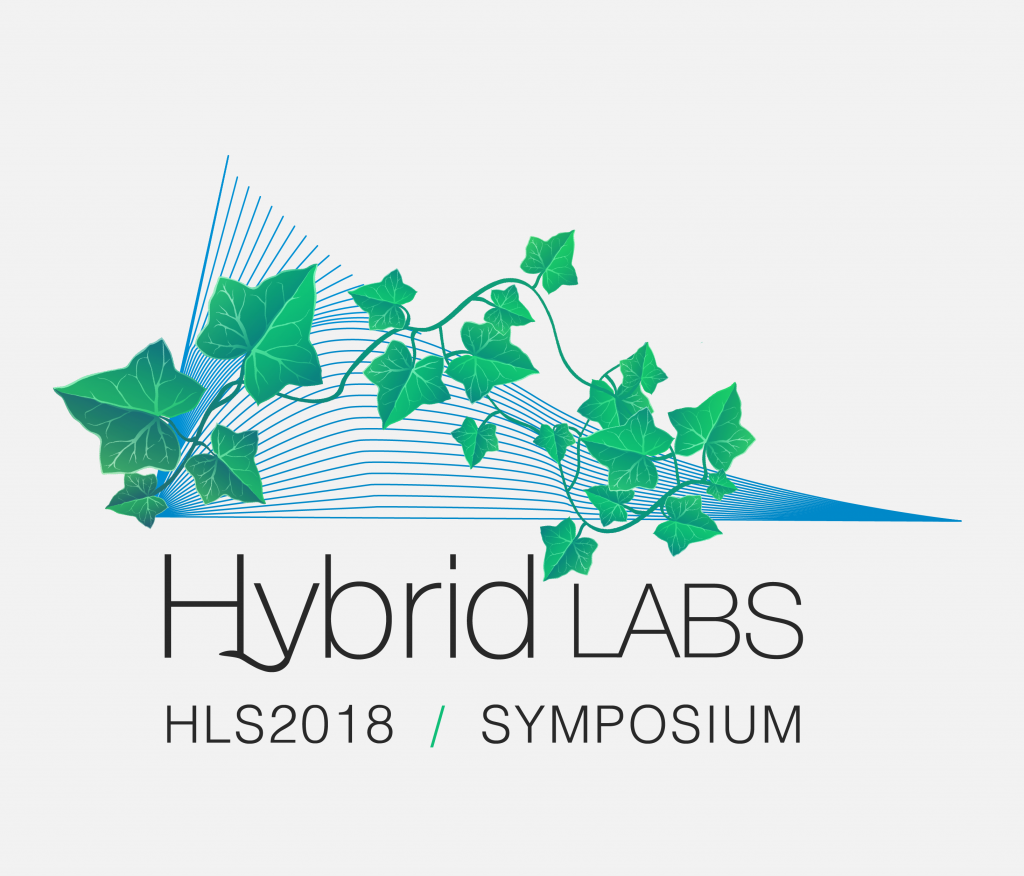
Welcome to the Media Lab Doctoral Seminar
TIME: Thursday May 3, 2018, from 16:00–19:00
LOCATION: Aalto University Harald Herlin Learning Centre, Otaniementie 9, Espoo (Otaniemi), 1st floor Johanna meeting room.
DOM-L0003 Doctor of Arts at Media Lab Seminar
Responsible teacher: Prof. Lily Díaz-Kommonen
Presentations by:
Pentti Määttänen, PhD (invited guest speaker)
Marikki Hakola
See more below.
The seminar is open for all. Welcome!
by Pentti Määttänen
Abstract: Pragmatism emerged at the 1900th century as an answer to the question: What has to be changed in philosophy if Charles Darwin is right? First and foremost we are embodied creatures within nature. Culture is a product of nature in the sense that one animal species has created for itself a special kind of social and historical environment. Second, the classical view of experience as sense perception is too narrow. Experience consists of perception and action. Overt action (with or without various instruments), a stock of practical skills, sensorimotor transaction with the environment, is the basic form of experiencing, interpreting and understanding the world. The unit of analysis in the study of cognition (meanings, beliefs, emotions and values) is the organism environment interaction, not the brain or the body. The relation between knowledge and the world is not abstract correspondence between linguistic or other symbolic expressions and the world; it is mediated by various practices. Thinking is anticipation of action, to know is to know what to do, and this holds also for language.
Pentti Määttänen, PhD (Philosophy), is a Docent & Lecturer at the University of Helsinki and at Aalto University.
List of publications: http://personal.inet.fi/tiede/penttimaattanen/
by Marikki Hakola
Abstract: SEMEION is a study about the new concepts and possibilities of virtual action space and cinematic interaction as an essential part of it. The theoretical part of the study is carried out in the framework of Charles Sanders Peirce’s and John Dewey’s pragmatism, semiotics and aesthetics. At the heart of the study is experimental artistic activity to form a practical platform for testing theoretical ideas, concepts and findings. The practical platform consists of four independent cinematic works.
The objective of this study is to enlarge the theory of cinema to cover new cinematic features, such as real-time, interactive, tactile, performative and spatial VR/AR forms of moving image. However, to understand interactive moving image and virtual cinematic action space and their future potential, one should first understand what the cinematic interaction itself is in an ontological sense. This guides the study into quintessential philosophical and semiotic questions. The aim is to build a theory that is relevance not only in film related issues, but also to the general questions of philosophy and aesthetics.
Pragmatist semiotics by Charles Sanders Peirce (1839-1914) crystallizes into the following philosophical approaches: Naturalism, nature constitutes understanding. Experience and acquisition of knowledge are not only observations but also activities: Being is acting. Meanings take shape through action. According to John Dewey’s (1859-1952) pragmatist aesthetics, experience (art) is a collective and cultural activity. Physical and symbolic practices are inseparable and a part of nature.
Referring to Peirce and Dewey , the theoretical approach of the study is based on the following philosophical conceptions:
– The basis of the cinematic experience is in symbolic thinking
– Cinematic signs have the ability to refer beyond themselves
– Understanding the interaction between cinematic signs and the spectator is the same than understanding the interaction between human and the world (nature)
– Pragmatism in a case of cinema means use and situational meaning of all kinds of cinematic signs
– The cinematic object and the subject are always inseparable
– Art of cinema is a special symbolic practice and will only become a work of art through experience.
The focus is to develop the tools for understanding the structure and montage of the interactive moving image from author’s, especially concept designer’s, screenwriter’s and director’s points of view. The special attention is paid to the challenges of concept design, to the designer’s situation between the new idea and the finished artistic plan, script or screenplay.
The study is implemented through artistic approach and cinematic works produced by the professional film and performing artists’ teams. Practical testing gives useful, illustrative, instructive and sensory feedback from the tested ideas, subjects and concepts. The study also benefits greatly from the direct feedback and observations of the team members, the professional artists and film makers.
The goal is to help deepen screenwriter’s, designer’s and director’s understanding and views on the potential of a cinematic virtual space and interactive moving image and thus provide opportunities for new thinking and concept development. The aim is that the study would encourage future authors in their artistic work to create courageous and interesting concepts for future interactive cinema.
Marikki Hakola is a Doctoral Student at the Department of Media. She graduated from the Academy of Fine Arts Helsinki as a visual artist in 1984. Her works include dance and music films, documentaries, video artworks, performances, stage designs, web projects and artistic research projects. Hakola’s works have been broadcast and screened international on television channels, in art museums and festivals. Her works have been exhibited at several art museums, collections and archives, such as the Musée National d’Art Moderne in Centre Pompidou, Paris, the Helsinki Art Museum and Museum of Contemporary Arts Kiasma Helsinki.
Hakola’s works include music films Luonnotar (2010), Otto (2009), Butterfly Lovers (2005), L’Enfant et les sortiléges (2004), the live performances Scaramouche (2015) and Piipää (1987-2011), telepresence project Triad (1998-99), video works Stilleben – Milena’s Journey (1989), TransVersum (1993) and Continuum (1999), installations The Time is Right for… (1984), PRE (1984), Pinus (1990), Ferris Wheel (1991), Milena Distanz (1992), Figure (2000), Moloch (2010) and Frontiers (2014).
Marikki Hakola CV: https://www.kroma.fi/marikkicv/
Welcome to the Media Lab Doctoral Seminar
TIME: Thursday April 19, 2018, from 17:00–20:00 (NOTE: Starting time one hour later)
LOCATION: Aalto University Harald Herlin Learning Centre, Otaniementie 9, Espoo (Otaniemi), 1st floor Johanna meeting room.
DOM-L0003 Doctor of Arts at Media Lab Seminar
Responsible teacher: Prof. Lily Díaz-Kommonen
Presentations by:
Sally Davison (guest lecture)
Andy Best: Social Empowerment through Dance and Media Performance
See more below.
The seminar is open for all. Welcome!
Sally Davison is a dance artist and choreographer whose work deeply attends to the existential qualities of the moving body and life more broadly, focusing in particular on aspects of inclusion, accessibility and equality. Davison is Chairperson of DanceAbility Finland ry an organisation dedicated to promoting inclusion through dance, and Artistic Director of Kaaos Company an inclusive professional dance company based in Helsinki since 2010.
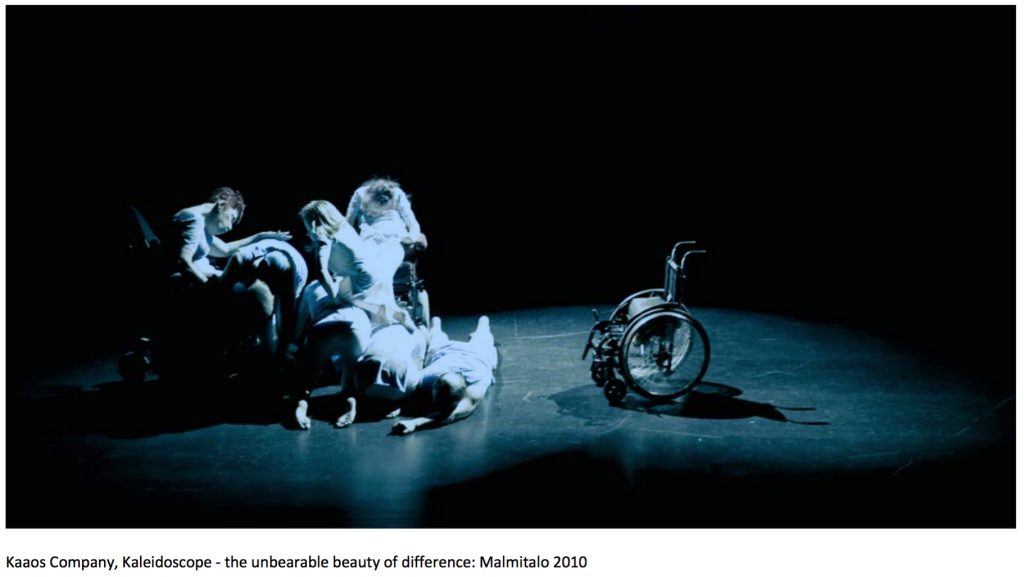
by Andy Best
Abstract: This presentation illustrates research carried out with individuals from Dancehearts, a performance group for young people with disabilities. I seek to show that interactive media technologies can significantly increase the level of social empowerment experienced by individuals taking part in group public performance by magnifying the effect of their own actions and movement in the space. Using custom designed wireless electronic controllers, the dancers “play” music and sound using the movements of their bodies and wheelchairs. They are no longer purely a choreographed performer, but in addition they cause affect to the whole performance space through aural interaction, controlling the soundscape used in the performance. For the differently-abled person, the ability to harness media technologies for artistic expression challenges their perceived public role as passive object. They become, through their own actions, active subjects causing affect to the whole audience experience.
Andy Best is a media artist, sculptor and educator, specialising in playful and provocative interactions and installations. Andy’s work tackles social and political themes, and he seeks collaboration in diverse spheres such as data visualisation, live performance, and physical interaction design. Between 2002 and 2013 Andy was principal lecturer of Digital Arts at Turku University of Applied Sciences. Since 2014 he has been lecturer in sculpture at Aalto University. Andy is currently Head of the Center for General Studies. He is a doctoral student at Aalto Media Lab, researching possibilities for social empowerment through collaborative interaction in media environments, with emphasis on working with people with disabilities.